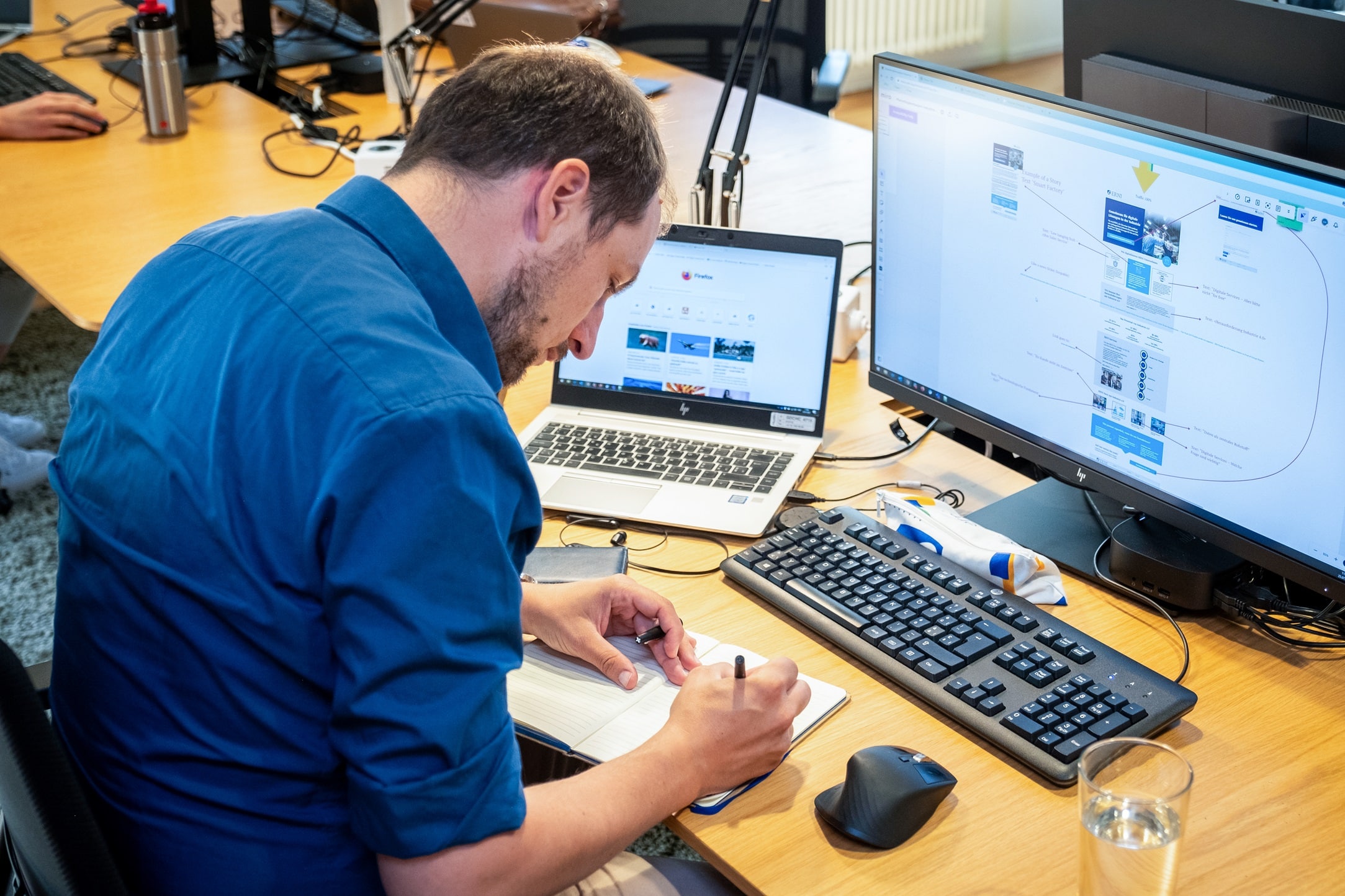User experience is at the heart of user experience design. A user experience designer enhances the experience for the user of a particular product. One thing is central here: knowing the user and their characteristics as well as possible. Users should be involved early and often. They are the ones who judge whether the product is useful, understandable and enjoyable to use. Once a good feeling for the users has been developed, the first design solutions are created, tested and continuously refined. Keywords include information architecture, user flow, personas and usability testing. So what does it look like in the end? In a nutshell, it is the best possible user experience before, during and after use. Of course, business goals are also taken into account.

You may notice there has been little talk of creative design so far. Attractively designed user interfaces are certainly a visible and tangible result. However, by no means do they encompass everything that UX design produces.
What are the sub-disciplines, and what are their benefits? We will now introduce you to the most important ones.
User Research
User research is the methodical study of potential users. The aim is to find out what their needs and challenges are. The findings should help to create the best possible concepts for the user experience.
UX Architecture
User experience architecture is about consistently combining the elements of expertise into one big whole. It defines which methods, models and procedures are used.
Interaction Design
Interaction design is about conceiving the interaction elements. The HOW and WHAT is based on the findings about the users from the research phase. These are, for example, menus, selection options and other clickable or touchable elements of the user interface. The labelling of the components is also of great importance. The user must understand their goal within the product with little effort.
Strong parallels can be drawn here to teaching a child to ride a bike: first, you explain it to them, then you push and support for the first few metres, and finally, you let go.
Visual Design
Even though the visual design is not part of UX design, it plays a crucial role when developing a product as it focuses on the aesthetics of the user interface. Elements such as images, colours and fonts should be designed to be appealing and appropriate. An excellent visual design fits seamlessly with the content and functionalities of a product. It should help build trust and interest in the product.
Not all UX designers are equally experienced in all areas of expertise. Most of them combine more substantial expertise in user research, interaction design and several years of experience in architecture. Usually, someone else who has specialised exclusively in this area is brought in for the visual design. This specialisation lets them put the finishing touches on the user interface design. Nevertheless, it is essential that visual and interaction designers work closely together in order to adjust all aspects of the product accordingly. A lack of this collaboration is what we often see in practise, and usually comes at the cost of product quality and usability.
What would I like to impart upon you in a nutshell? User experience design encompasses different areas of expertise that work together to create the best possible user experience. What’s visible at the end is the user interface – but it requires some preparatory work and holistic conceptualisation at first.

